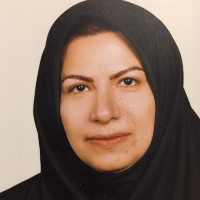The Consideration of the Techniques of Influencing the Audience in Postmodern Poetry of Iran
Literature as a powerful communication medium is able to affect the audience from different angles. By studying the views of theorists, it can be found out that in different periods of the history of literature, “the Author” has used the influencing techniques to achieve goals such as persuasion, teaching, getting active, and making literary pleasure. The instrumental use of the “influence” has faded in the postmodern era, and then the influence itself, has become a priority in the process of literary creation. Iranian postmodern poets believe that the techniques of influencing the audience in traditional rhetoric are repetitive and accordingly ineffective now. They declare that today's poets must encounter the audience from new and various angles, especially those derived from today's life.
Through the centuries, literature has been considered as an effective medium to persuade the audience to an exact thought or ideology. From this perspective, the audience is a passive and impressionable element. After the invention of the printing industry, the perception of the passivity of audience was shifted to activity. Since then influencing the readers was important because it could encourage them to act independently. From the eighteenth century, “making literary pleasure” was added to other goals. This purpose was followed, especially in formalist literary and critical works. Postmodernism is a broad movement that developed in the mid- to late 20th century all over the world. The concept of “influence” in postmodern superficial philosophy, is totally self-referential. The postmodern author makes his/her work appear quite astonishing and mesmerizing at first glance. Through this technique he/she takes away any opportunity of thinking and reflecting from audience; accordingly attract them unconsciously.
This paper, through a descriptive-analytical perspective, first focuses on the reasons of postmodernism’s emphasis on the concept of “influence” and reveals the quality of influence which is intended by postmodernism. Then, categorizes and studies the most effective techniques which are used in Iranian postmodern poems to have a highest impact on audience. Each of these techniques is referred to one or more dimensions of postmodern philosophy, as well as from living in the cybernetic/cyberpunk (human-technology) world.
Iranian Postmodern poets use various techniques to influence the audience. The first and most effective technique is “eliminating distinctions” between poet and audience, elite audience and public audience, formal language and informal language, the shiny world of poetry and usual world of the daily life. The second technique, is “Being surprising” which causes excitement and quick impact on the audience. The postmodern poets often achieve this goal through two main methods De-harmonization (musical, linguistic, moral), and irregular collage of poetic elements. The third technique, is applying the method that is used by transactional technologies to have effective communication today: “visual attractions”. For achieving this goal, poets exert the visual and optical elements in the form and content of their poems.
To have a strong, immediate, and superficial effect on the audience, postmodern poets try to employ the unprecedented and eclectic techniques. They have realized that in order to achieve the maximum impact, the literary work must be familiar, fascinating and surprising. To be familiar, poets use the ordinary spaces and details of everyday life, informal language, and personal life events in their poems. To be fascinating and surprising, they apply De-harmonization and visual techniques in both form and content. The quality of application of these techniques is different from previous methods in Persian literature. It seems that they are derived from the techniques used by technological media, especially interactive media, to attract more audience.
-
Existential Anxiety in connection with Gothic Aesthetics in Forūgh Farrokhzād's Poetry
*
Journal Of Linguistic and Rhetorical Studies, -
Political Subjectivity and Hermeneutics of the “Self” in Shamlou’s Poetry
Ghodsieh Rezvāniān*, Souren Sattārzādeh
Half-Yearly Persian Language and Literature,



